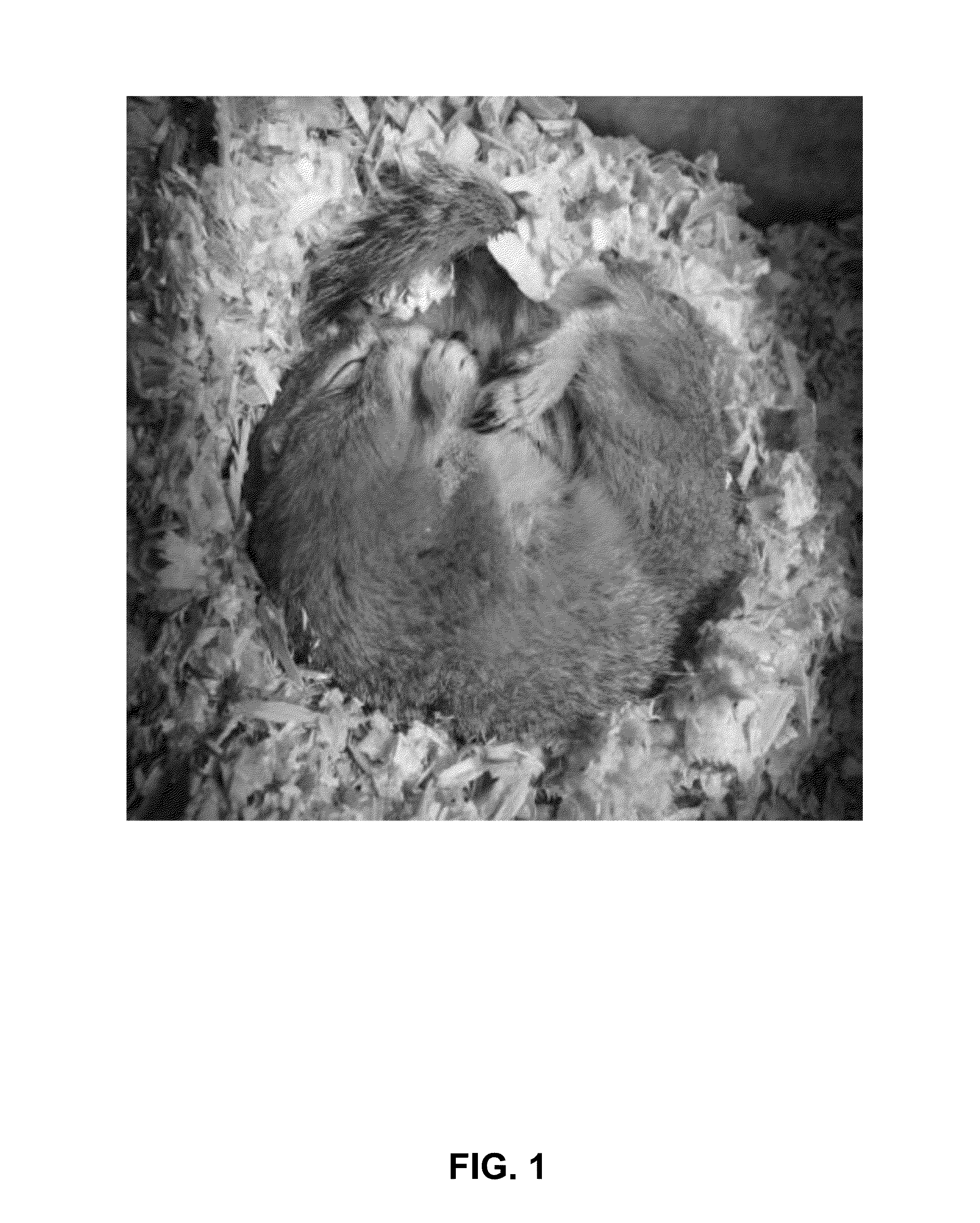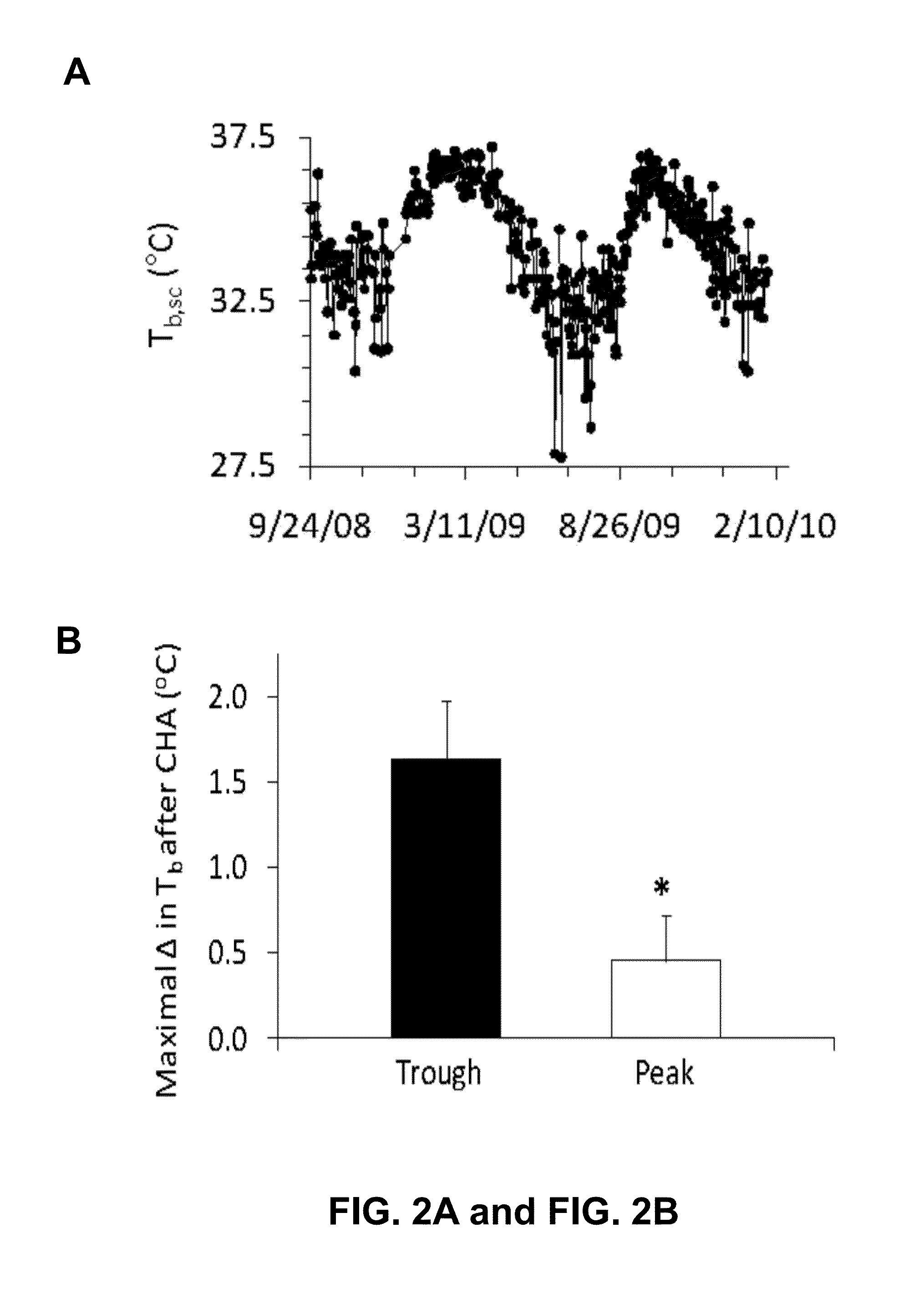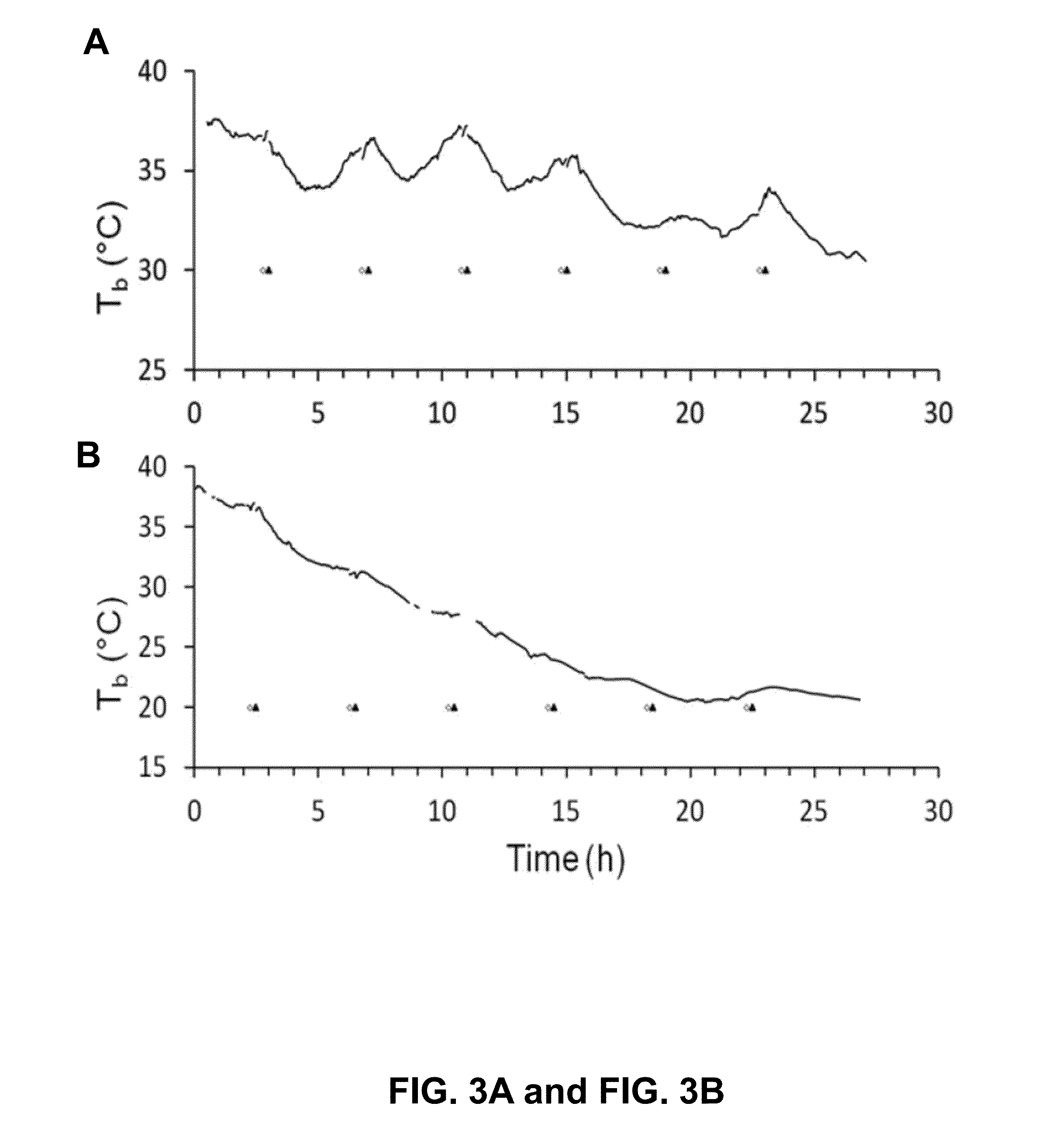Methods and compositions for the treatment of ischemic injury to tissue using therapeutic hypothermia
a technology of ischemic injury and composition, applied in the direction of biocide, heterocyclic compound active ingredients, peptide/protein ingredients, etc., can solve the problems of shivering, unconsciousness, brain damage, death, etc., and achieve the most problematic shivering, hypothermia has not happened, and the effect of reducing the risk of ischemic injury
- Summary
- Abstract
- Description
- Claims
- Application Information
AI Technical Summary
Benefits of technology
Problems solved by technology
Method used
Image
Examples
example 1
Adenosine and Hypothermia Induction
[0200]The data show a role for adenosine in regulating the onset of torpor and controlled reduction in thermogenesis and body temperature (Tb) (FIG. 1). Adenosine is a neuroprotective by-product of cellular metabolism that accumulates and is released from the brain during traumatic events (Dunwiddie and Masino, 2001). Under nonpathologic conditions, adenosine functions as a bioenergetic network regulator (Boison et al., 2011), and as a neuromodulator with key roles in sleep, thermoregulation and hibernation (Drew and Jinka, 2012) via a family of G protein-coupled receptors (GPCR). Torpor onset in the arctic ground squirrel (AGS) is regulated within the CNS by A1AR signaling and depends on a seasonal change in sensitivity to agonists (Jinka et al., 2011). Specifically, an A1AR agonist (6N-cyclohexyladenosine or CHA) injected i.p. or delivered into the lateral ventricle (icv) induces torpor in winter, but not in summer. Moreover, CHA-induced torpor i...
example 2
A1AR Agonists Induce a Torpor-Like State in Diet Restricted Rats
[0203]In the AGS, Tb waxes and wanes according to a circannual rhythm that corresponds to the hibernation season. Troughs in Tb are seen at times when AGS display spontaneous torpor. Troughs in Tb also predict greater sensitivity to CHA (FIG. 2). The link between Tb and A1AR sensitivity seen in the AGS was also seen in rats. Rats fed every other day (dietary restriction; DR) show a decrease in Tb and an increased Tb-lowering effect of CHA (Jinka et al., 2010). These data indicate that similar mechanisms underlie increased sensitivity to CHA in AGS during the winter season and in rats fed a restricted diet.
[0204]FIG. 2A shows a representative rhythm in subcutaneous body temperature (Tb,sc) in 1 of 24 AGS monitored over a two-year period. Spontaneous torpor is indicated by abrupt decreases in Tb,sc below about 30° C. FIG. 2B shows a maximal response to a low (non-torpor inducing) dose of CHA (0.1 mg / kg, i.p.) was greater ...
example 3
Induction of Therapeutic Hypothermia
[0207]Mild therapeutic hypothermia, in which core body temperature (Tb) is reduced to 32-34° C. for 24 hr or longer, is becoming the standard of care for cardiac arrest patients. However, technical challenges may limit the use of therapeutic hypothermia. Shivering is one of the most problematic issues in targeted temperature management (TTM) and is controlled with pharmacological adjuncts, such as paralytics, narcotics, sedatives or a combination of these such as meperidine and buspirone.
[0208]Here, 6N-cyclohexyladenosine (CHA), an A1AR agonist, induced hibernation as a pharmacological adjunct to facilitate effective techniques for TTM. Tb in hibernating ground squirrels can fall to as low as −3° C., which was through a process regulated by adenosine A1 receptor (A1AR) signaling within the CNS, a mechanism common to other types of torpor. Evidence in rats indicates that activation of CNS A1AR with CHA suppresses shivering and nonshivering thermoge...
PUM
| Property | Measurement | Unit |
|---|---|---|
| Therapeutic | aaaaa | aaaaa |
Abstract
Description
Claims
Application Information
 Login to view more
Login to view more - R&D Engineer
- R&D Manager
- IP Professional
- Industry Leading Data Capabilities
- Powerful AI technology
- Patent DNA Extraction
Browse by: Latest US Patents, China's latest patents, Technical Efficacy Thesaurus, Application Domain, Technology Topic.
© 2024 PatSnap. All rights reserved.Legal|Privacy policy|Modern Slavery Act Transparency Statement|Sitemap



